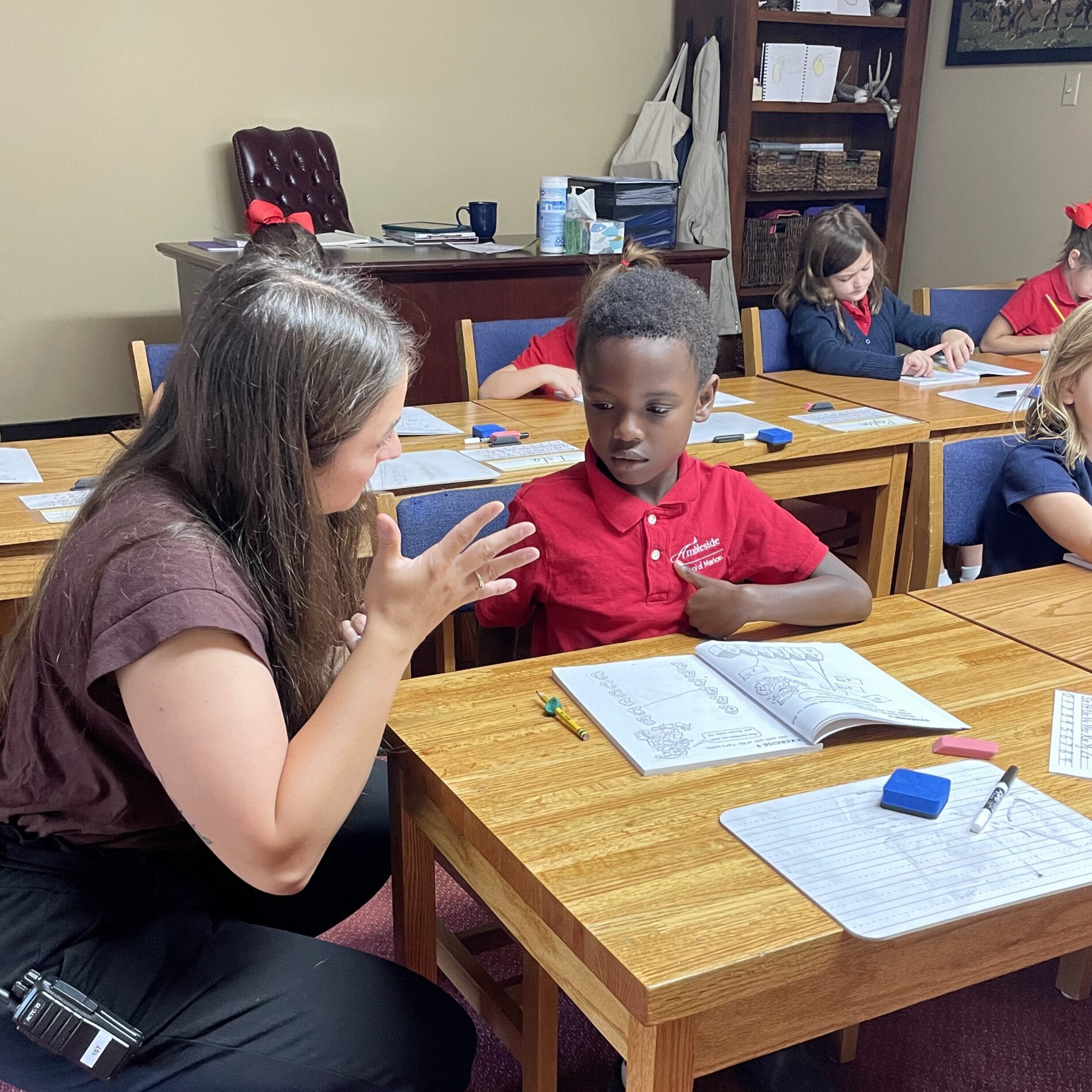Ambleside Schools International Articles

Image courtesy of Ambleside School of Marion.
Browse more Ambleside Schools International Resources.
Video Series Part 4. The Importance of Atmosphere
Chapter One: The Foundation of Joy
Charlotte Mason emphasized cultivating an atmosphere conducive to learning and growing. At Ambleside, we take great care to develop such an atmosphere, and our teachers are actively engaged and attuned to what is ‘going around’ in the classroom, on the playground, and through the school hallways. Teacher and student learn to consider their influence on the atmosphere—does it reflect our best self and is it for the good of others? One of the most important responsibilities of a teacher is to set an atmosphere of joy in the classroom, the sense “it is good to be me here with you!” The sense of joy is non-verbal-—it is in the air, breathed in by the children. A joyful atmosphere allows children to feel safe and free of anxiety so their brains are freed to learn and explore. Visitors to Ambleside Schools often remark, “There is peace here. The students’ and teachers’ expressions are genuine, full of delight and full of joy.”
This week we continue our video and discussion guide series in the words of Charlotte Mason and with consideration of the importance of a joyful atmosphere in a child’s education.
Both the circle of the family and that of social intercourse are subjected to forces that are active in the entire social body, and that penetrate the entire atmosphere of human life in invisible channels. No one knows whence these currents, these ideas arise; but they are there. They influence the moods, the aspirations, and the inclinations of humanity, and no one, however powerful, can withdraw himself from their effects; no sovereign’s command makes its way into their depths. They are often born of a genius to be seized upon by the multitude that soon forgets their author; then the power of the thought that has thus become active in the masses again impels the individual to energetic resolutions: in this manner it is constantly describing a remarkable circle. Originating with those that are highly gifted, these thoughts permeate all society, reaching, in fact, not only its members, but also through these its youth, and appearing again in other highly gifted individuals in whom they will perhaps have been elevated to a definite form. Whether the power of these dominant ideas is greater in the individual, or in the body of individuals as a whole, is a matter of indifference here. Be that as it may, it cannot be denied that their effect upon the one is manifested in a reciprocal action upon the other, and that their influence upon the younger generation is indisputable.1
But, supposing that ‘Education is an Atmosphere’ brings a fresh and vigorous thought to our minds, suppose that it means to us, for our children, sunshine and green fields, pleasant rooms and good pictures, schools where learning is taken in by the gentle act of inspiration, followed by the expiration of all that which is not wanted, where charming teachers compose the children by a half-mesmeric effluence which inclines them to do as others do, be as others are,––suppose that all this is included in our notion of ‘Education is an atmosphere,’ may we not sit at our ease and believe that all is well, and that the whole of education has been accomplished? No; because though we cannot live without air, neither can we live upon air, and children brought up upon ‘environment’ soon begin to show signs of inanition; they have little or no healthy curiosity, power of attention, or of effort; what is worse, they lose spontaneity and initiative; they expect life to drop into them like drops into a rain-tub, without effort or intention on their part.2
Questions and Thoughts to Consider:
- Charlotte Mason talks about forces that penetrate human life through invisible channels, which influence moods, aspiration, and inclinations. Talk about your experience in both a positive and a negative light how these channels have influenced you and others you know.
- What are the channels that communicated joy, the idea of “It is good to be me here with you.” when you were growing up?
- What are the messages from society that travel through this invisible channel? On what are they based?
- What would happen if the air we breathe in a class or home would be all ease?
- Describe a joy filled classroom and home when there is challenge and when there are daily rhythms?
1 Charlotte Mason, School Education, 326.
2 Charlotte Mason, School Education, 94.



